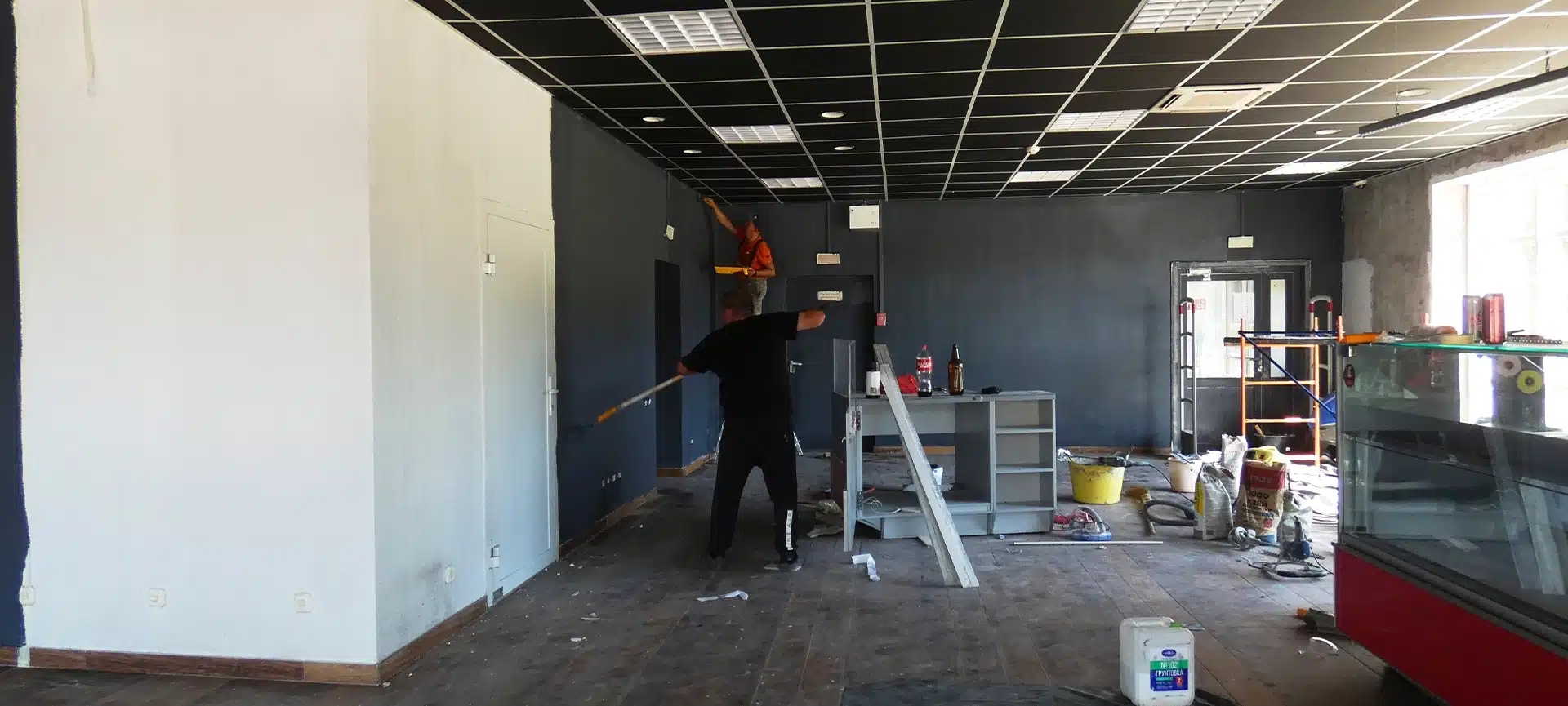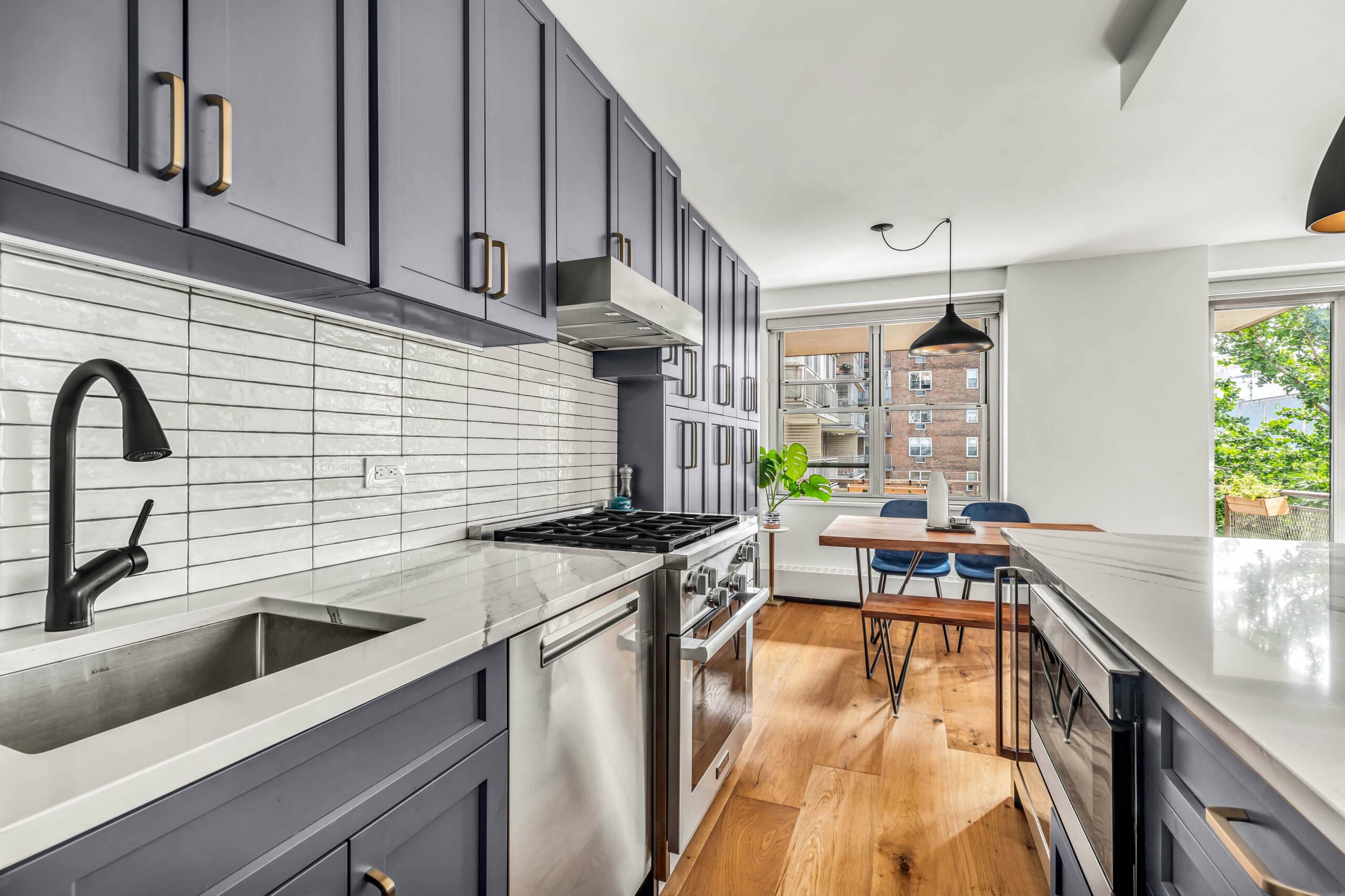Home Planning & Renovations
Quartz vs Granite: Which Is Best for NYC Kitchens?
By Adam Blake
Choosing the perfect countertop is more than a matter of taste; it’s a decision that impacts the functionality, maintenance, and overall aesthetic of your kitchen for years to come. For NYC homeowners dealing with space constraints, budget planning, and a fast-paced lifestyle, the stakes are even higher.
In this guide, we’ll compare quartz and granite, two of the most popular materials among New Yorkers, to help you make an informed choice that complements your kitchen’s size, style, and daily use.
Material Overview: Quartz vs Granite
In the world of kitchen renovations, countertops play a central role not only in day-to-day function but also in defining the space’s visual appeal. For NYC homeowners, where kitchens are often compact and multitasking is essential, the materials used must balance aesthetics, durability, and practicality. Quartz and granite are two of the most trusted choices, each offering distinct advantages depending on how you cook, clean, and live.
What is Engineered Quartz?
Engineered quartz countertops are composed of 90–95% crushed natural quartz, combined with resins and pigments. The result is a non-porous, uniform surface that resists stains, bacteria, and scratches. Unlike natural stone, engineered quartz is available in a wide variety of colors and patterns that remain consistent across slabs, making it ideal for modern designs that require visual continuity. We’ve used quartz in many NYC renovations, including this sought-after Cambria design, Carrick, that presents a modern spin on a smooth concrete look in this Upper West Side apartment remodel.
In design-forward renovation, other brands like Caesarstone are used to complement a minimalist white kitchen. The surface’s fine-grain texture and subtle veining introduced warmth and depth without disrupting the airy tone, creating contrast while maintaining harmony. Caesarstone’s durability and understated design made it the perfect fit for this contemporary space.
For a busy NYC family showcased in this before-and-after apartment transformation, we used Silestone countertops to combine durability with sleek, modern appeal. The surface’s non-porous quality was essential for withstanding daily wear, while its rich, polished finish elevated the kitchen’s aesthetic without overpowering other design elements.
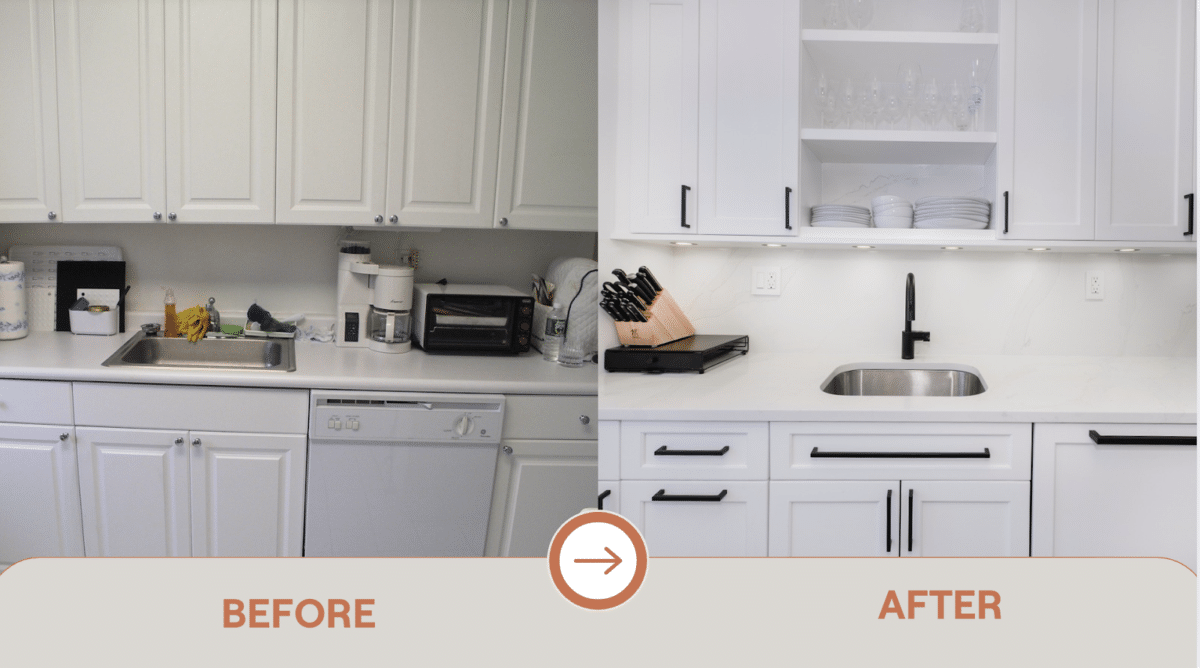
Natural Stone Characteristics
Granite is a 100% natural stone, quarried and polished for residential use. Every granite slab is unique, showcasing its own mineral patterns, color variations, and veining. This natural variation is often a selling point for homeowners who want one-of-a-kind surfaces. Granite is heat-resistant and incredibly strong but porous by nature, requiring sealing once or twice a year to maintain resistance to stains and bacteria. The natural beauty of granite is timeless, especially in traditional or transitional kitchen styles.
Pros and Cons for NYC Apartments
In the confined, high-traffic kitchens common in NYC apartments, functionality and maintenance often outweigh purely aesthetic choices. Both quartz and granite offer advantages, but their suitability depends on individual lifestyle needs.
Durability, Maintenance, Resale Value
- Durability: Quartz is extremely hard, non-porous, and nearly impervious to stains and scratches. It doesn’t require sealing, which simplifies upkeep in busy households. Granite is similarly durable but more susceptible to chipping around edges and may require extra care during installation.
- Maintenance: Quartz is easy to clean with soap and water and never needs resealing. Granite, though strong, is porous and needs regular sealing to protect from moisture, oil, and food stains.
- Resale Value: Both materials are considered premium upgrades in NYC real estate. However, quartz’s sleek look and low-maintenance appeal are increasingly favored by buyers who want style without the upkeep. Granite’s unique beauty can appeal to traditionalists or those who value natural materials.
Cost Comparison in the NYC Market
Countertop pricing in NYC varies widely based on factors like slab rarity, thickness, edge profiles, and installer rates. As of 2025, here’s a general breakdown:
- Quartz: $85 to $150 per square foot, including installation. Costs can rise for thicker slabs, specialty colors, or custom edges.
- Granite: $75 to $140 per square foot. Exotic or rare granite types push prices higher, while standard options remain competitive with quartz.
Quartz typically provides better long-term value for city dwellers due to its durability and virtually maintenance-free nature. However, granite can offer savings upfront if sealed and maintained correctly.
For homeowners planning to include a kitchen island, it’s worth noting that islands often require additional square footage of material, which can affect the overall countertop budget.
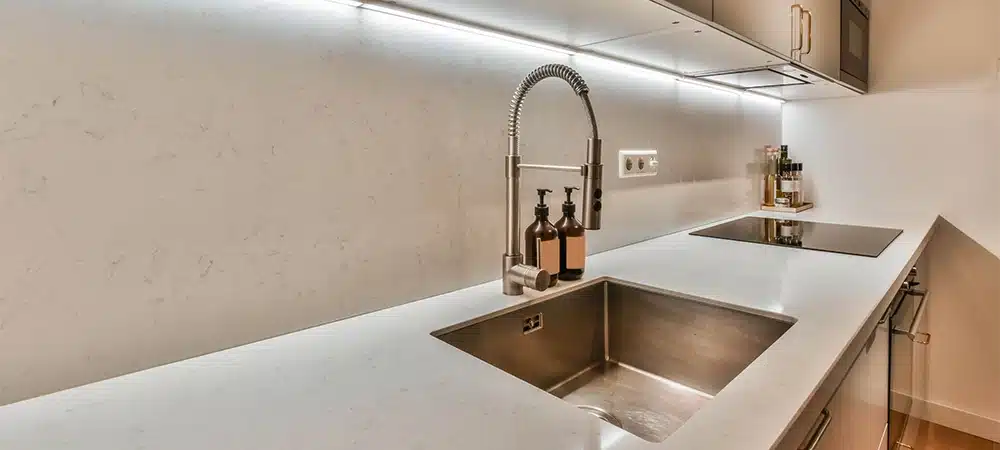
Quartz vs Granite: Design Considerations
In NYC kitchens, countertops must pull double duty: serve as functional surfaces and enhance the visual openness of smaller spaces. Material choice can impact everything from light reflection to how easily the surface coordinates with cabinetry, backsplashes, and flooring.
Color, Texture, Pairing with Cabinetry
- Quartz: Available in matte and glossy finishes with a broad palette of colors, from concrete-look grays to marble-inspired whites. Seamless appearance and minimal variation help maintain visual order, which is key in small kitchens. Neutral tones work well with both dark espresso cabinets and crisp white ones.
- Granite: Ranges from earthy browns to striking blues, greens, and blacks with rich natural veining. Best used in kitchens with more traditional or eclectic cabinetry styles. Due to its unique patterns, it’s wise to view slabs in person before finalizing a design to ensure harmony with other finishes.
Open shelving, brass hardware, and minimalist cabinetry styles tend to pair exceptionally well with quartz. For classic or rustic kitchens, granite complements shaker-style or paneled wood cabinetry.
What MyHome Renovation Experts Recommends
Recommendations Based on Project Type and Goals
At MyHome, we take a personalized approach to every kitchen renovation. Our recommendations depend on your lifestyle, cooking habits, and how much maintenance you’re willing to take on. Whether you want a minimalist, modern vibe or a warm, organic centerpiece, your countertop choice sets the tone.
You can explore some of our past renovation projects to see how we’ve helped NYC homeowners select materials that balance style and practicality in tight urban spaces.
- Choose quartz if you prioritize low maintenance, consistent color, and a clean, modern look that makes a small space feel bigger.
- Choose granite if you love organic patterns, want a unique centerpiece, and don’t mind occasional upkeep to preserve natural stone.
We’ve worked on hundreds of NYC kitchen renovations and often recommend quartz for urban apartments where performance, durability, and simplicity are top priorities. That said, some of our most stunning designs feature granite as a focal point in open-concept layouts.
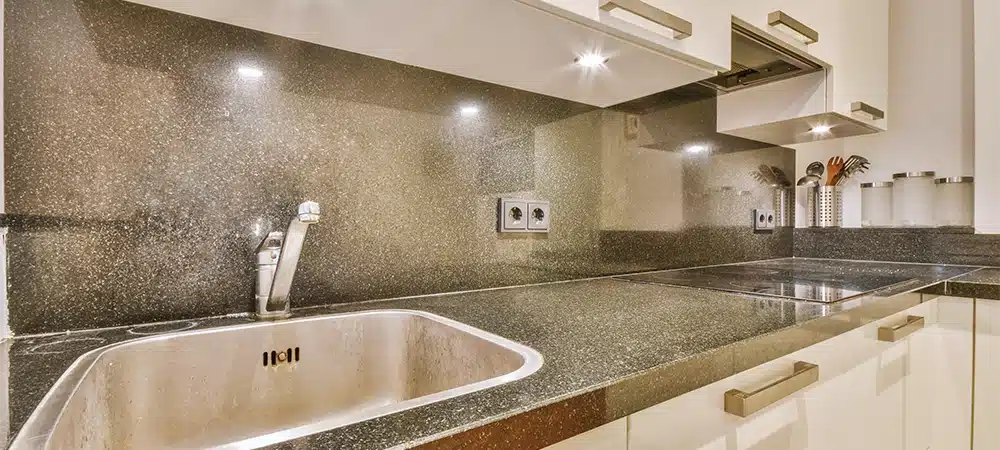
Frequently Asked Questions
- Which material handles heat from hot pans better—quartz or granite?
Granite tolerates higher direct heat; quartz can scorch or discolour if very hot cookware is placed directly on it. For both, use trivets to protect the finish and avoid thermal shock at seams or overhangs. - How visible will seams be in a small NYC kitchen?
Quartz’s uniform patterning typically makes seams less noticeable, and fabricators can colour-match resin well. Granite’s natural veining can highlight seams unless slabs are book-matched. In tight apartments, slab size and elevator access can also force additional seams. - Can I do a full-height backsplash or waterfall edges with either material?
Yes. Quartz excels at continuous, modern looks for full-height backsplashes and waterfall islands; granite delivers dramatic, natural movement. Budget for extra slabs, precise templating, and reinforced support at overhangs. - What thickness and edge profile work best for NYC cabinetry?
3 cm is the most durable and avoids plywood build-ups; 2 cm with a mitered front can achieve a “thick” look while keeping weight down. Popular edges: eased, pencil, or mitered waterfall for modern kitchens; ogee or bevel for more traditional spaces. - Are there building or HOA considerations before I choose?
Pre-war co-ops and many condos require Certificates of Insurance, elevator padding, limited work hours, and may have load/weight or noise rules. Check building guidelines early—access, delivery route, and slab size can affect both material choice and final cost.
Explore Countertop Options in Person
Still unsure? Seeing the materials in person often makes the decision easier. MyHome has a dedicated showroom in Manhattan where you can experience your countertop options firsthand:
- Compare full quartz and granite slabs
- Touch different finishes and edge profiles
- Get design advice from our experts
- Visualize how each option fits with your cabinets, flooring, and layout
Book a consultation to visit our showroom and take the first step toward your dream NYC kitchen.
